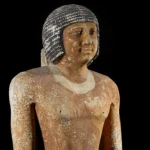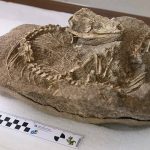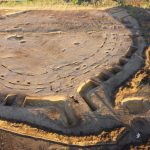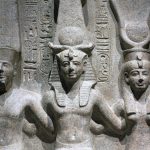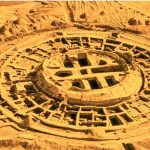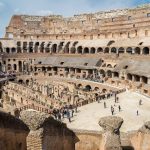Runit Dome
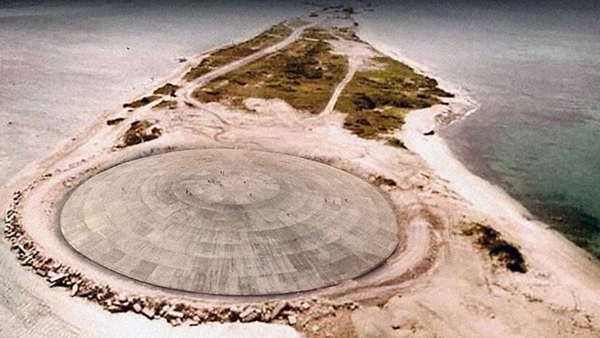
The Runit Dome is known as an “impenetrable coffin” built in the late 1970s on Runit Island, part of the Enewetak Atoll in the Marshall Islands. Constructed by the United States military, this site was used to store radioactive waste from nuclear tests. The waste was dumped into a crater with a volume of 83,000 cubic meters and sealed with a 45 cm (18-inch) thick concrete dome.
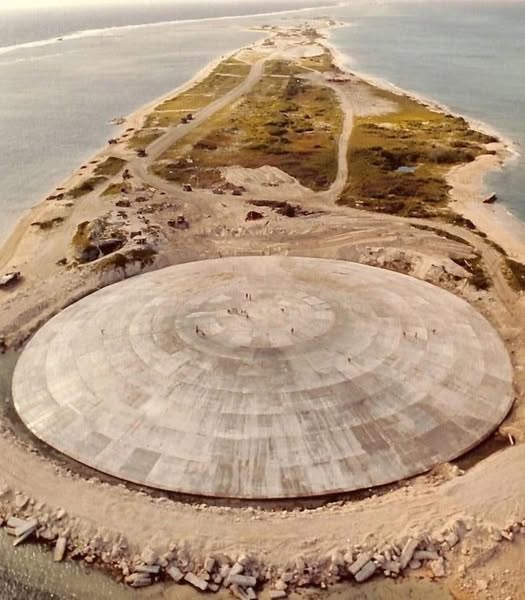
This structure is a remnant of the U.S. nuclear testing program. During the 1940s and 1950s, the U.S. military conducted a series of nuclear tests in the Marshall Islands, which led to the displacement of thousands of local residents.

After the tests were completed, the U.S. decided to bury most of the radioactive waste in an area known as “the Cactus Crater” on Runit Island. To prevent the radioactive materials from seeping into the land and surrounding seawater, the U.S. constructed the Runit Dome, a concrete enclosure 350 feet (about 107 meters) in diameter, made of 18-inch-thick concrete and reinforced with steel.
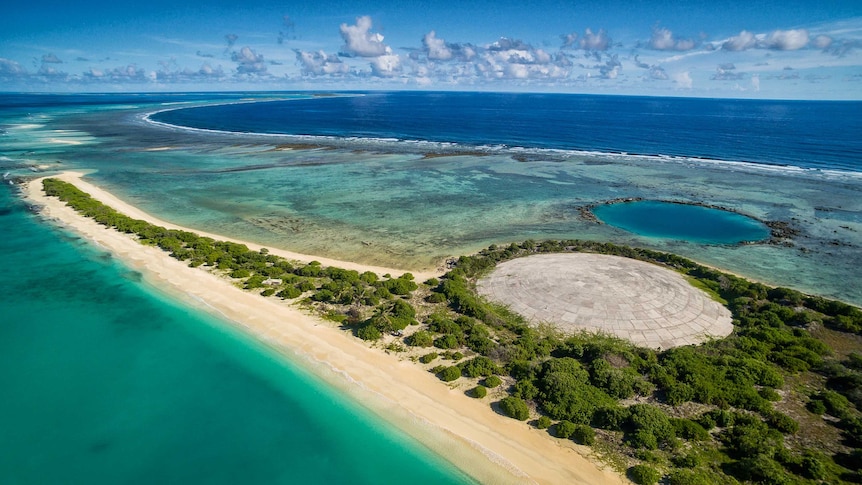
Today, the Runit Dome is cracking, leaking, and poses a serious threat to the environment and public health. Radioactive substances have already started to escape from the dome and contaminate the surrounding soil.
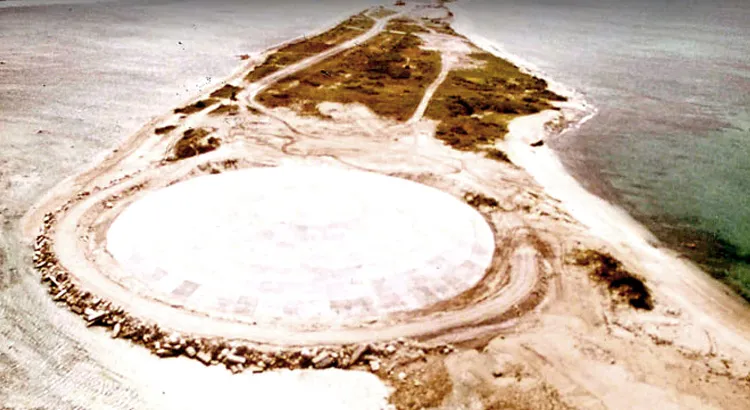
Experts warn that the situation could worsen in the future as climate change leads to rising sea levels, which may gradually flood the nuclear “coffin.” Ocean currents could then distribute the radioactive waste across the globe.
The Runit Dome issue has drawn international concern and is considered one of the negative consequences of the U.S. nuclear testing program. The management of radioactive waste on Runit Island is now one of the most urgent global environmental issues, requiring cooperation from both the U.S. and the international community.
Meanwhile, the Marshall Islands government is grappling with how to handle this nuclear waste problem, while the U.S. has declared it bears no responsibility for any issues arising from its past nuclear testing activities.
